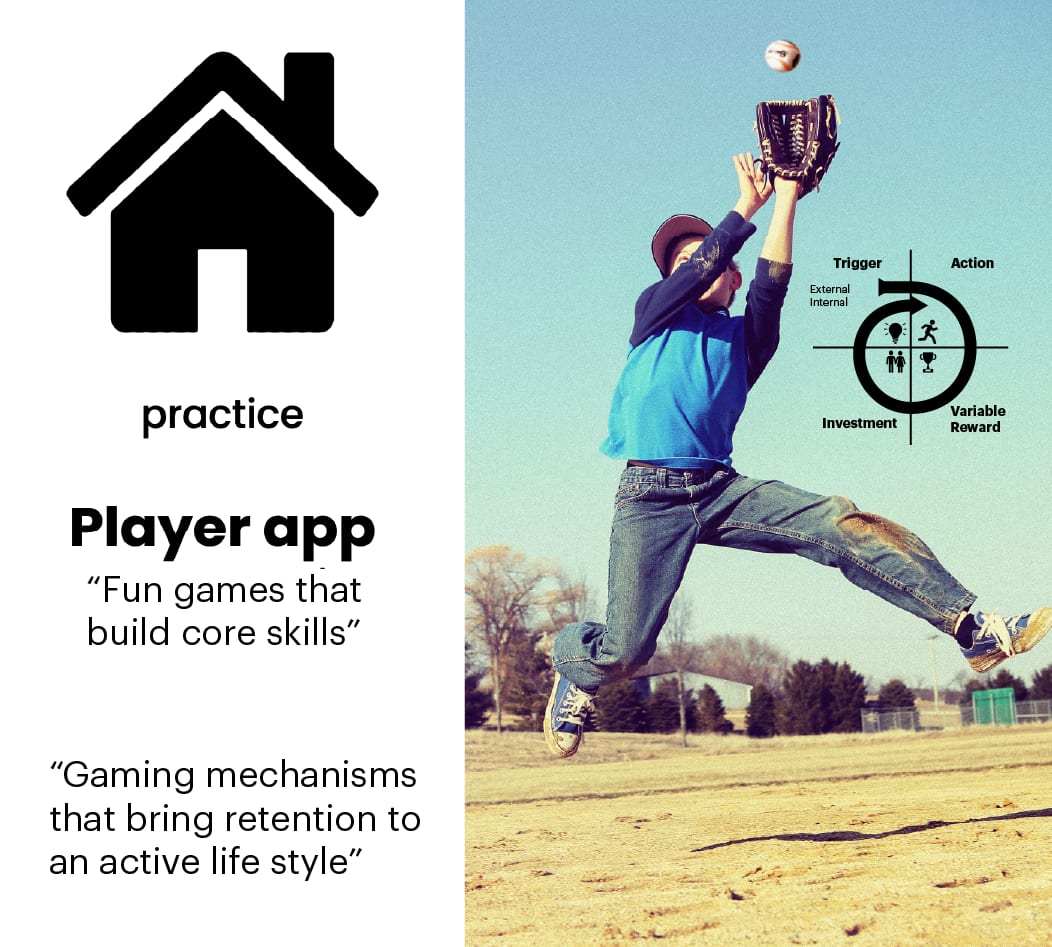
NEXT
Home

During the insight and strategy phase, we identified two viable pathways for the baseball app: one as a consumer-focused home experience for kids and parents, and the other as a training aid for coaches. The home-use strategy aimed to support children’s development through playful, movement-based engagement while addressing parental needs such as promoting outdoor activity, encouraging positive routines, and enabling social interaction. The coaching-oriented strategy focused on enhancing structured practice and extending learning beyond training sessions.
A comparative analysis of business models revealed that the home product offered greater revenue potential, with a favorable willingness-to-pay relative to the accessible price point. This insight drove our decision to prioritize the consumer experience.
With the strategic direction set, we synthesized findings from our user research into a feature specification that balanced user value and market viability. Given that we were introducing a novel product in an emerging category, a key aspect of our UX design was to embed habit-forming mechanisms to drive retention and foster daily engagement. In parallel, we prioritized virality features to support organic growth through social sharing and word-of-mouth adoption — crucial levers for growth in early-stage consumer products.
UX Strategy – Prioritizing the Home Market
UX Strategy – Prioritizing the Home Market
NEXT
Home

